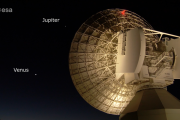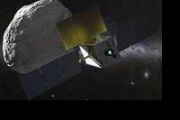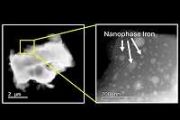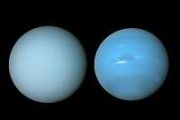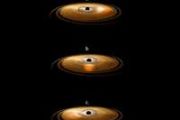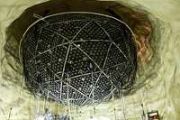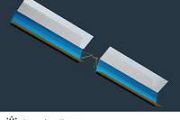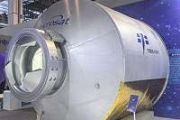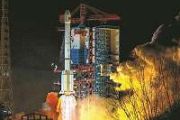
Copernical Team
Crew of first private flight to ISS prepare for Earth return

The crew of the first fully private mission to the International Space Station was set on Sunday to leave the orbiting laboratory and head back to Earth.
The three businessmen and a former NASA astronaut had spent more than two weeks on the station on a history-making mission organized by startup company Axiom Space.
A SpaceX capsule was scheduled to undock from the ISS at 8:55 pm (0055 GMT Monday) for the return trip, before landing in the ocean off the coast of Florida on Monday around 1:00 pm (1700 GMT).
The four men—three who paid tens of millions of dollars each for the rare chance to take part in the mission, and former astronaut Michael Lopez-Alegria, who holds dual US-Spanish citizenship—were originally scheduled to spend only eight days on the space station.
But bad weather on Earth forced repeated delays in their return.
Private passengers Larry Connor, an American who heads a real estate company, Canadian businessman Mark Pathy and Israeli former fighter pilot and entrepreneur Eytan Stibbe had blasted off from Florida on April 8, reaching the ISS a day later.
Search for life on Jupiter moon Europa bolstered by new study
 Scientists say they are one step closer to understanding Europa, a moon orbiting Jupiter that's widely considered the prime candidate for alien life forms within the solar system.
Europa is believed to contain subterranean salty water hidden by a thick outer shell of ice. But according to a new study examining the moon's topology, a certain topographical feature called a "double ridge"
Scientists say they are one step closer to understanding Europa, a moon orbiting Jupiter that's widely considered the prime candidate for alien life forms within the solar system.
Europa is believed to contain subterranean salty water hidden by a thick outer shell of ice. But according to a new study examining the moon's topology, a certain topographical feature called a "double ridge" Flexible quantum sieve filters out the deuterium
 Starship Enterprise flew through the galaxy using deuterium as fuel. Even if this was science fiction from the 1960s and 70s, research on the real application of the hydrogen isotope for energy generation is still going on today. The main challenge here is the extraction of the isotope. Deuterium (chem. abbrev. D, "heavy" hydrogen) is one of the three natural isotopes of hydrogen, along with pro
Starship Enterprise flew through the galaxy using deuterium as fuel. Even if this was science fiction from the 1960s and 70s, research on the real application of the hydrogen isotope for energy generation is still going on today. The main challenge here is the extraction of the isotope. Deuterium (chem. abbrev. D, "heavy" hydrogen) is one of the three natural isotopes of hydrogen, along with pro Roscosmos plans to soon start deliveries of ICBM Sarmat to Russian forces
 Russian state-owned space agency Roscosmos is planning to start serial shipments of the intercontinental ballistic missile (ICBM) Sarmat to the Russian strategic missile forces this fall, Roscosmos chief Dmitry Rogozin said on Wednesday.
"This fall, once the Sarmat flight and development tests are completed, we plan to begin supplying serial heavy intercontinental ballistic missiles of thi
Russian state-owned space agency Roscosmos is planning to start serial shipments of the intercontinental ballistic missile (ICBM) Sarmat to the Russian strategic missile forces this fall, Roscosmos chief Dmitry Rogozin said on Wednesday.
"This fall, once the Sarmat flight and development tests are completed, we plan to begin supplying serial heavy intercontinental ballistic missiles of thi Today's space domain awareness just got better as new AFRL Space Lab opens
 The Air Force Research Laboratory Space Vehicles Directorate held a ribbon cutting ceremony April 11 to open a new facility named Skywave Technology Laboratory. The 3,500 square foot, $3.5 million lab is located in a remote area on Kirtland Air Force Base.
Though small in square footage compared to many AFRL labs, in acreage it is one of the largest. The Skywave Lab is situated on 72 acres
The Air Force Research Laboratory Space Vehicles Directorate held a ribbon cutting ceremony April 11 to open a new facility named Skywave Technology Laboratory. The 3,500 square foot, $3.5 million lab is located in a remote area on Kirtland Air Force Base.
Though small in square footage compared to many AFRL labs, in acreage it is one of the largest. The Skywave Lab is situated on 72 acres Experts issue call to regulate space debris as levels of junk mount
 Proliferating levels of debris are posing a threat to the space environment and should be regulated as more satellites are being launched into space, researchers say.
Edinburgh University researchers said in a study published Friday in the journal Nature Astronomy the debris is troublesome, potentially affecting "professional astronomy, public stargazing and the cultural importance of t
Proliferating levels of debris are posing a threat to the space environment and should be regulated as more satellites are being launched into space, researchers say.
Edinburgh University researchers said in a study published Friday in the journal Nature Astronomy the debris is troublesome, potentially affecting "professional astronomy, public stargazing and the cultural importance of t Planet unveils details about Pelican Constellation
 Planet Labs PBC (NYSE: PL), a leading provider of daily data and insights about Earth, today unveiled details about plans for Pelican, its next-generation satellite constellation, which was previously announced at Planet Explore 2021.
Pelican is designed to rapidly capture changing events as they unfold and to provide a leap forward in capabilities for Planet customers - from higher revisi
Planet Labs PBC (NYSE: PL), a leading provider of daily data and insights about Earth, today unveiled details about plans for Pelican, its next-generation satellite constellation, which was previously announced at Planet Explore 2021.
Pelican is designed to rapidly capture changing events as they unfold and to provide a leap forward in capabilities for Planet customers - from higher revisi Spaceflight prepares to launch its 50th mission
 Spaceflight Inc., the leading global launch services provider, is preparing for its 50th mission, which will launch aboard a Rocket Lab Electron no earlier than April 22. The RL-9 mission, called "There and Back Again," is scheduled to launch from Rocket Lab's Launch Complex 1 in New Zealand. Following this launch, Spaceflight will have successfully launched 448 sp
Spaceflight Inc., the leading global launch services provider, is preparing for its 50th mission, which will launch aboard a Rocket Lab Electron no earlier than April 22. The RL-9 mission, called "There and Back Again," is scheduled to launch from Rocket Lab's Launch Complex 1 in New Zealand. Following this launch, Spaceflight will have successfully launched 448 sp OneWeb agrees satellite launch program with New Space India
 OneWeb reports that the company and New Space India Limited, the commercial arm of the Indian Space Research Organisation, have entered into an agreement that will help ensure OneWeb completes its satellite launch programme.
The first launch with New Space India is anticipated in 2022 from the Satish Dhawan Space Centre (SDSC) SHAR, Sriharikota. The launches will add to OneWeb's total in-o
OneWeb reports that the company and New Space India Limited, the commercial arm of the Indian Space Research Organisation, have entered into an agreement that will help ensure OneWeb completes its satellite launch programme.
The first launch with New Space India is anticipated in 2022 from the Satish Dhawan Space Centre (SDSC) SHAR, Sriharikota. The launches will add to OneWeb's total in-o Pushing the boundaries of space exploration with X-ray polarimetry
 The secrets hiding in the vast expanse of outer space have intrigued humankind for ages. The invention of the optical telescope during the 17th century allowed humans to see stars appearing as mere twinkling dots in the night sky. Thanks to scientific innovations over the next four centuries, we can now launch telescopes into space to get a better look at astronomical objects and even study them
The secrets hiding in the vast expanse of outer space have intrigued humankind for ages. The invention of the optical telescope during the 17th century allowed humans to see stars appearing as mere twinkling dots in the night sky. Thanks to scientific innovations over the next four centuries, we can now launch telescopes into space to get a better look at astronomical objects and even study them 











